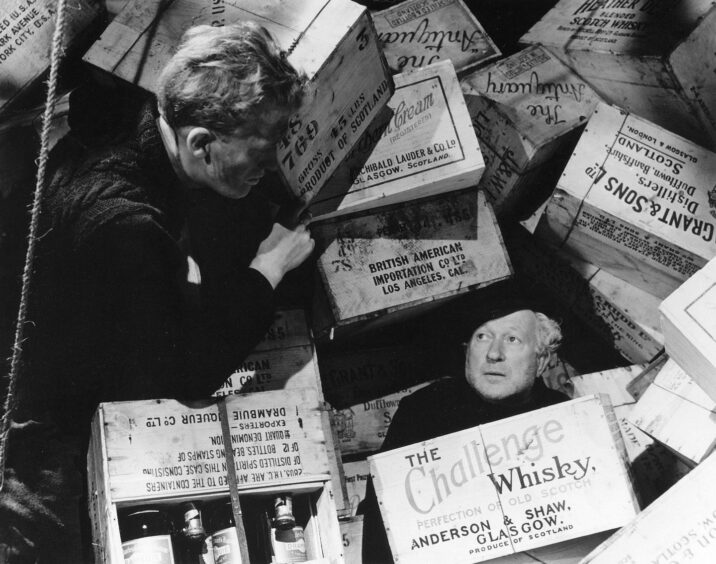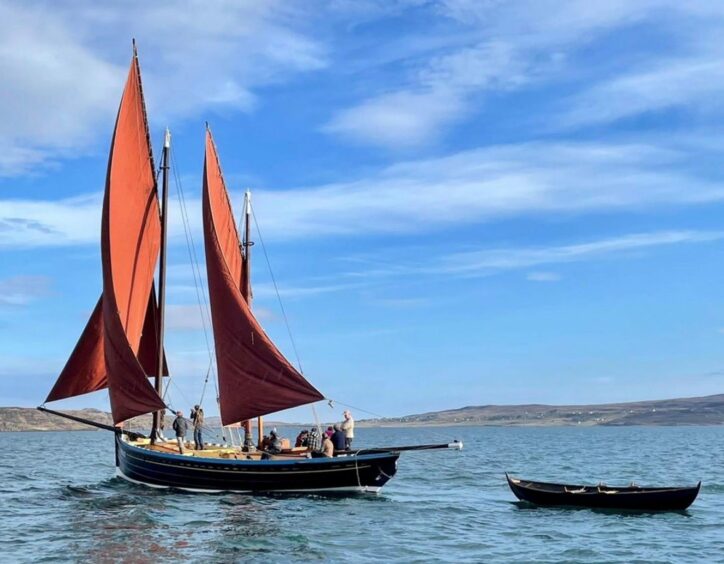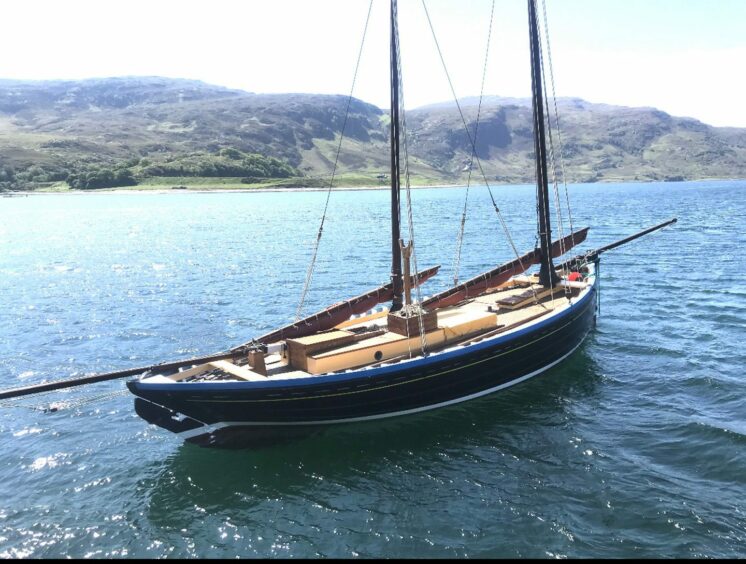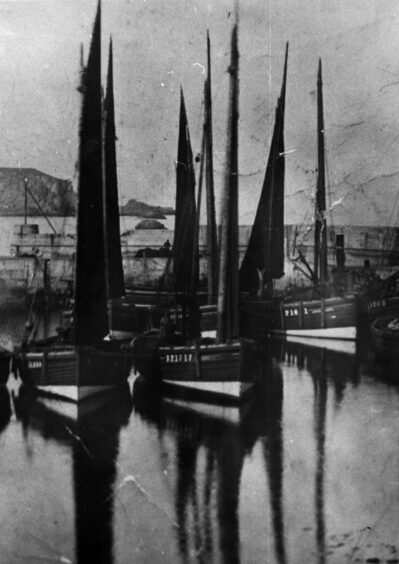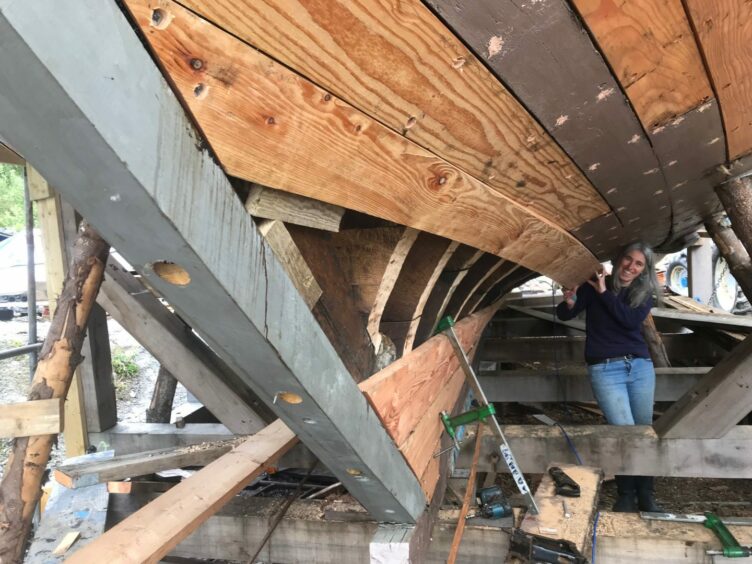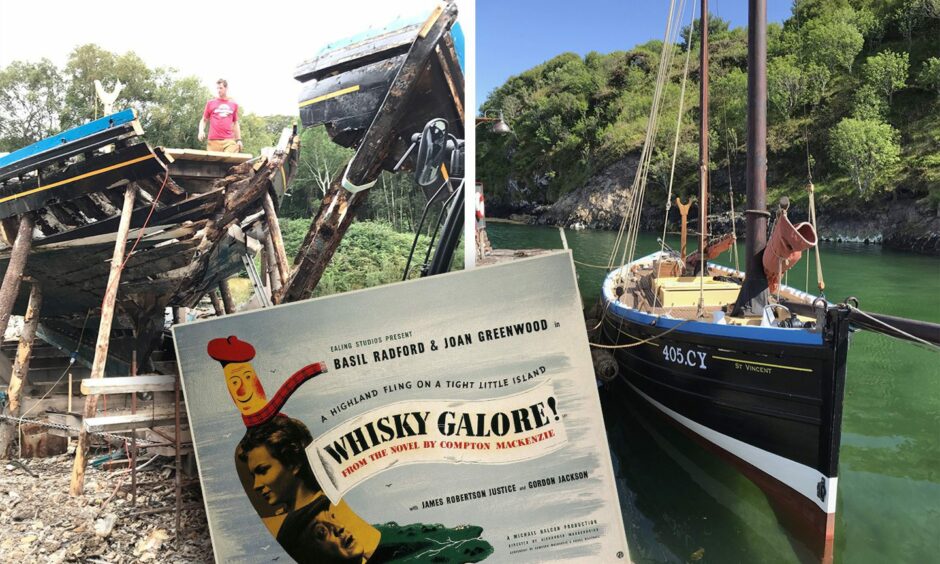
It’s the stuff of legends and the silver screen, and it’s coming to this year’s Portsoy boat festival.
Whisky Galore! immortalises the night the SS Politician grounded off Eriskay in February 1941, disgorging thousands of bottles of Highland Nectar whisky, to the delight of the islanders.
They sent their fishing boats out to help salvage —and of course hide— the golden nectar, including CY405, a herring drifter named St Vincent.
That very boat, now 113 years old and restored to its pristine glory, is visiting Portsoy for this weekend’s ACE Winches Scottish Traditional Boat Festival.
Quite apart from her racy Whisky Galore! history, St Vincent is one of the rarest boats at the festival.
She’s possibly the only Zulu herring drifter left in the country, now restored exactly as she would have been in 1910.
It’s a near homecoming for her too, as she was built in neighbouring Banff by W & G Stephen for her first owner, D McDonald, on the island of Eriskay.
Could she even appear among the fishing boats in this extraordinary 1935 film by German aristocrat Werner Kissling?
After Eriskay, St Vincent worked from Wick, followed by Cullivoe, Shetland.
In 1975, she left Shetland for Grimsby where she worked as a trawler, owned by Sidney Carlton.
In 1980, she moved to Lowestoft, owned by Brian Tubby and continued fishing until the late 1980s.
How this boat which will be on show at the Portsoy boat festival was converted to a pleasure vessel
She was converted to a pleasure vessel thereafter and at some stage ended up in North Shields, re-named Nautilus.
She was returned north to Arbroath by James MacGregor in August 2007, and underwent a partial restoration, completed in 2010.
After that, she lay slowly deteriorating in the harbour for a decade.
Her second restoration has been carried out over the past two years by Dan Johnson and Tim Loftus at their boat yard in Ullapool.
Tim and Dan epitomise the notion of salt in the veins, both steeped in sailing and boat-building.
Rescue mission
They were commissioned by the Tanera Mor Restoration Project to rescue St Vincent from her lonely decline in Arbroath harbour and restore her to her 1910 condition.
Now, through meticulous research and two years of intensely hard work, Johnson and Loftus have restored St Vincent to her former glory as a dipping lug-rigged herring drifter.
A century ago, there were hundreds of these sleek, fast vessels, known as Zulus, chasing herring off the coast of Britain.
At one point in Banff alone there were 600 Zulus registered in port.
They were powered by sail and oar, a feat which still leaves Dan Johnson awestruck.
He said: “The boats used to go out with six crew on board.
“They’d cast the net, drop the rig and the mainsail and drift for 24 hours, sleeping in quite rustic little bunks.
“Herring also sleep at night and would end up in the nets, up to 20 tonnes of them.
“The catch was hauled aboard into a huge empty hold below and the boat would high tail it back to shore.”
Handling the vessel, and the catch, took enormous strength and skill.
Hard work
Dan said: “It’s hard work. You’re entirely at the whim of the wind and tides.
“We need a minimum of four crew to raise the mainsail.
“When it comes to rowing, we use the oars to get in and out of harbours, and rowing thirty tonnes of fishing boat is hard work.”
In their day Zulus were at the cutting edge of speed and efficiency, but as technology advanced, it turned out they were the final stage of the sail/oar era.
Before long, engine powered vessels made their appearance, and the Zulus began a long decline into obsolescence.
“Zulus suffered badly when engines came along,” Dan said.
“Unlike fifies, that other successful herring boat, they were difficult to put engines in so they were broken up or abandoned in Zulu graveyards.”
Restoring St Vincent took two years, during which Dan and Tim replaced 80% of the framing inside, and 70% of the hull planking.
She’s carvel-built, with the hull planks laid smoothly edge to edge and fastened to the frame.
Sourcing the wood was the biggest challenge, Dan says.
“We mill our own timber, but finding good quality wood was the biggest challenge.
“We found larch and Douglas fir in the forests around Ullapool.
“We’re very fussy about our wood.
Bent timbers are better for boats
“Saw mills are surprised to find we like bent timbers, but they’re better for boat building.
“And old stand European larch is better than the modern Japanese cross strain, but luckily there’s still plenty around.
“The oak for the framing comes from all over the country.”
The team spent a lot of time researching how the boats were put together and their interiors, from old photos.
Dan said: “We haven’t compromised anywhere. St Vincent is as she would have been in 1910.
“We asked ourselves, this boat is 100 years old, can we save it for the next 100 years?
“And that’s what we’ve done, uncompromisingly.”
The ACE Winches Scottish Traditional Boat Festival has as its maritime sponsor Glenglassaugh Distillery, located at Sandend Bay, just two miles from Portsoy.
More like this:
Could you help build a replica Scottish Zulu fishing boat? North-east expertise required!
And for more on what to expect at the Portsoy Boat Festival:
